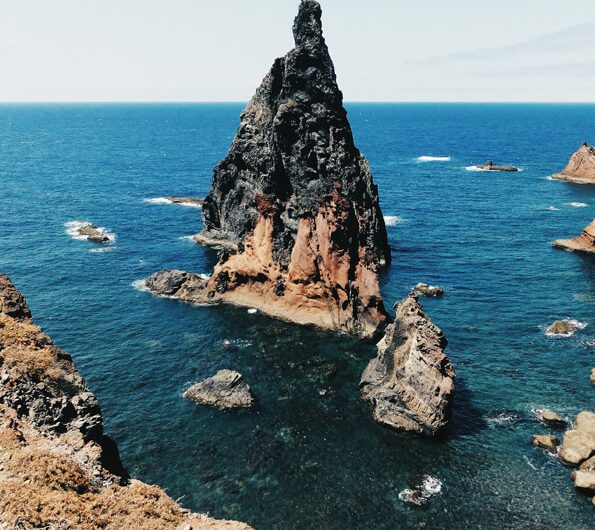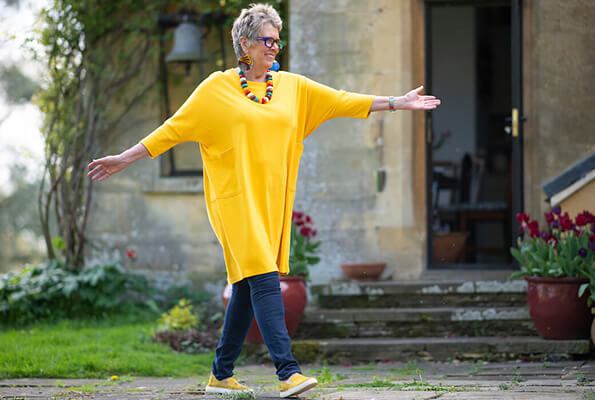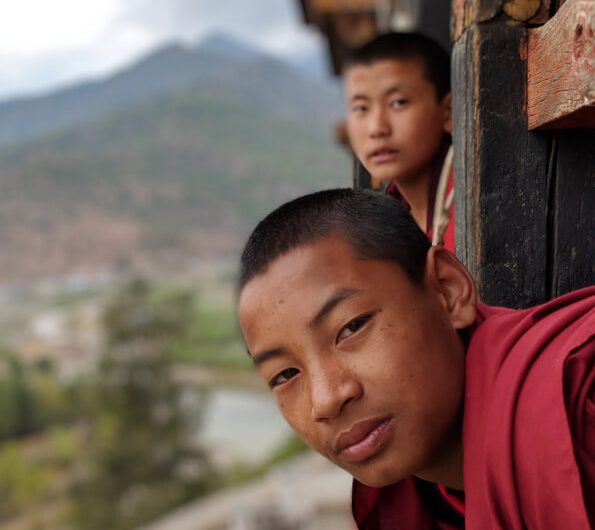 Travel
Travel
The wonders and delights of Bhutan
Bhutan a country full of temples, heritage, breathtaking scenery and old-fashioned values.
Once upon a time (in the seventh century actually) a demon whose body stretched over Tibet, Nepal and Bhutan, threatened the Himalayas. The Tibetan Guru Rinpoche fixed the problem by building, in a single day, one hundred and eight temples on top of the demon, pinning him down.
Since then temple-building has been the main obsession of the Bhutanese. There is a temple above every village and every town has a monastery (some clinging to a cliff-face), all active and financed by the devotion of the people. Buddhism is at the heart of Bhutanese life. Huge new temples, one with a Buddha the size of an eight-storey building, are still going up now, and 10% of the population are monks or nuns or employed by the temples. I found this both disturbing and inspiring. I could not believe that young people could willingly face a life of endless chanting, praying, drumming and making intricate cake offerings (their icing skills, achieved with only a practiced thumb, would win a Bake Off Show Stopper Challenge) with only the national game of archery and traditional dancing in the local festivals to break the routine.
Many of the old or lonely live in the monasteries, paying for their keep by doing full or half prostrations, or walking clockwise around the temples, spinning giant prayer wheels.
We watched an old woman, forcing herself down on her knees, then flat on her face, then creaking up again, over and over. I longed for her to just stop and have a sit-down. But when I passed her she gave me a beatific smile, happy in her task.
The Bhutanese measure their political success by Gross National Happiness and indeed they do seem happy. And indeed they do seem happy. No one is obese or scarily skinny and strangers smile at you. No one pesters you to buy, and there are few beggars. They are determined to somehow come into the twenty-first century without destroying the country’s heritage. I pray it will work, but everyone has a mobile phone and though they may never have eaten a McDonalds or worn a bikini, they know these things are out there and the young increasingly dress in jeans and go to bars and nightclubs. But for now, no buildings cannot be higher than six stories and must be built in the traditional style. Even the main airport looks like a monastery. The population still wears the national dress and are not admitted to a temple or government building without it. The current king is key to the ambition to embrace modernity, but slowly. He shadowed his father for many years before the King unexpectedly abdicated in his favour and decreed that the monarch must in future retire at sixty-five and that henceforth there would be political elections.
The royal family lives simply, in modest houses and without much pomp, the ex-king biking for pleasure and the present one trekking in the mountains. The king, his queen and toddler, are much loved and respected by the people, their pictures in every shop, house or bus shelter.
We had eighteen days in Bhutan and every day was worth it. Not always brilliantly comfortable: feral dogs bark all night — because the Bhutanese don’t kill anything — au contraire, they believe barking dogs are chasing away evil spirits and they keep them well fed; once we had a “home-stay’ with a solid board for a bed; I spent a good deal of time anxious about where we’d find a Western-style loo; the food was pretty boring — as I couldn’t take the locals’ blow-your-head-off chilli’ I got boiled veg and steamed rice every day for every meal; and the roads are an experience: they are widening the East-West trunk road which means a rocky ride, driving through dust-storms where they’ve been blasting the mountain-side and along precipitous drops of thousands of feet with our driver inching past a JCB or a truck with nothing to spare. Not once did we see a cone, tape, notice, barrier, railing, warning light, or sign indicating danger. The danger is obvious, and you’re expected to take care.
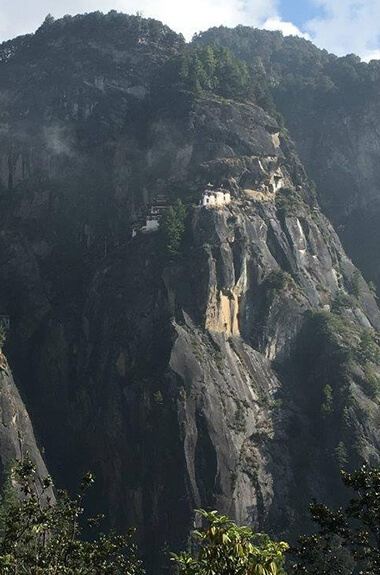
So, to the highlights: We had the good sense to hire horses to get us halfway up the mountain to the ‘Tiger’s Nest’ (one of those 108 temples built in a day). That way we could look up at the staggering views in comfort, instead of at our feet or the bum of the chap in front as we puffed and panted. After the half-way stop (where Prince Charles quit in order to paint the temple rather than climb to it) you have to hike for another hour and a half as the track gets too bad even for horses. When you get to the top you find that, though you are now as high as the temple, you are on the wrong side of a ravine. So I did some meditating, if not Omm…ing, while husband John climbed down 400 steps, across a bridge and up again on the other side. And then back down and back up to re-join me for the long hike down (no horses on the return trip). Taktshang Monastery is Bhutan’s most famous tourist attraction so you will never be alone, but it’s a must.
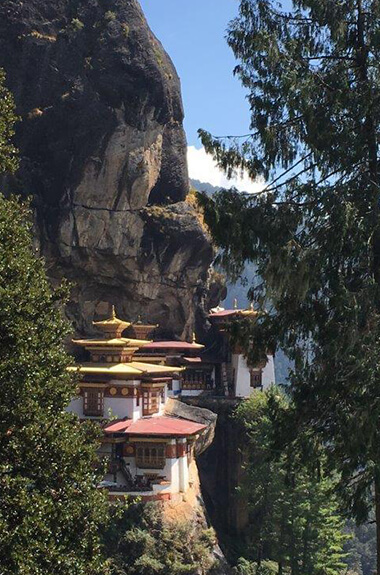
We hit a festival in Jakar Dzong and spent three hours watching the most extraordinary show: hundreds of families came in their best clothes to cram themselves into the monastery courtyard, separated from the performance space by only a white line, which they scrupulously respected. The monks danced for an hour or more in heavy wooden masks and multi-layered costumes representing deities, then sat in a row in the sun for another two hours while young women sang, or clowning characters performed, and then the whole population filed passed to make their donations and get a blessing. And then they danced again — all without a sip of water. Not a single child cried, or ran about or had a tantrum.
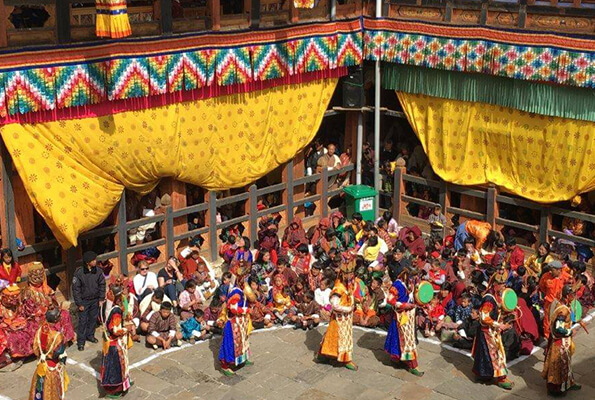
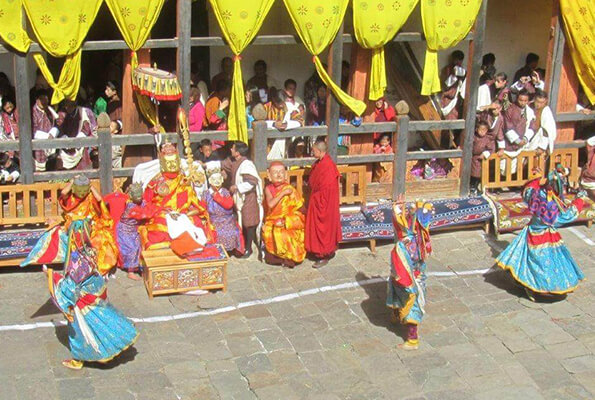
There is a fascinating museum, Oygen Choling, made by the owners of the village manor house, displaying the artifacts of generations of the same family and using them to brilliantly explain Bhutanese rural life: the mule trains sent to Tibet to trade for salt, leather-making, cooking, weaving, metalwork, building, fighting. Another must.
We were lucky to hit the rice harvest and see scenes only known to us from paintings: women reaping with sickles, the stooks tied with straw, threshing and winnowing by hand, transport by human back, ploughing by oxen or sometimes by a man pushing a single ploughshare. One day we came across several women and a dozen children sitting around a big plastic sheet. Their parents were all in the fields so this was a sort of creche. They invited us to join them for lunch, which was steamed rice, portioned out on the communal plastic with chilli so hot that the tiniest fleck burnt my mouth for hours. But a baby, not yet toddling, was demanding more. He preferred the chilli without the rice.
As we were leaving the whole group leapt up in excitement. Someone had spotted the arrival of two black-necked cranes from the freezing plains of Tibet to winter in the Bumdeling valley.
A good half of Bhutan is the nature reserve and seeing a black-necked crane is a big event.
And then there was the Lama Drukpa Kunley, also known as the Mad Monk, a fifteenth-century charismatic rebel who championed wine, women and song, and especially fornication. He blessed his followers with a huge carved phallus. The closest village to his temple has houses with walls painted with great hairy male genitalia and carved phalluses hanging from the eaves.
In Tashigang there’s an amazing artisan school where students not bright enough for university, and not slow enough for the plumbing, construction and cooking school, are taught the thirteen traditional arts. I forget the list, but we watched students sculpting in clay, carving wood, painting gods and goddesses, embroidering, weaving, and working in silver. Every image was plotted and measured to be exactly, but exactly, as it had been for hundreds of years. No one was striving for originality or imagination. They just wanted perfection.

